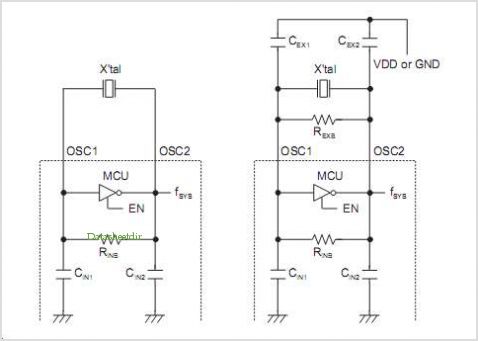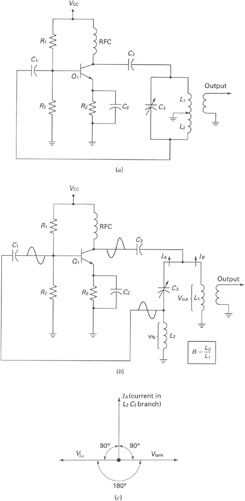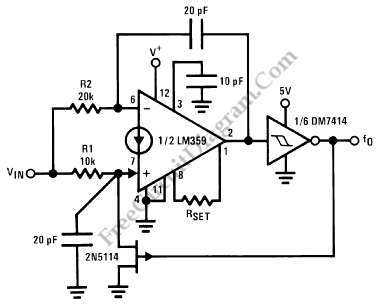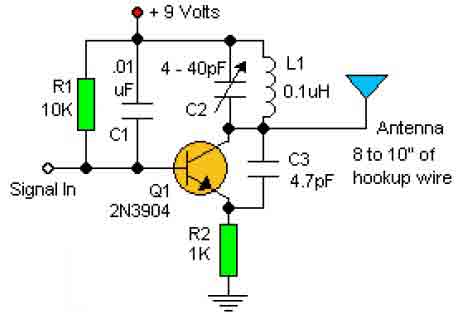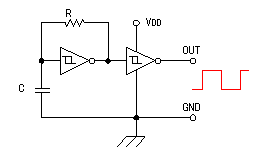
RE POWERED SIDETONE OSCILLATOR
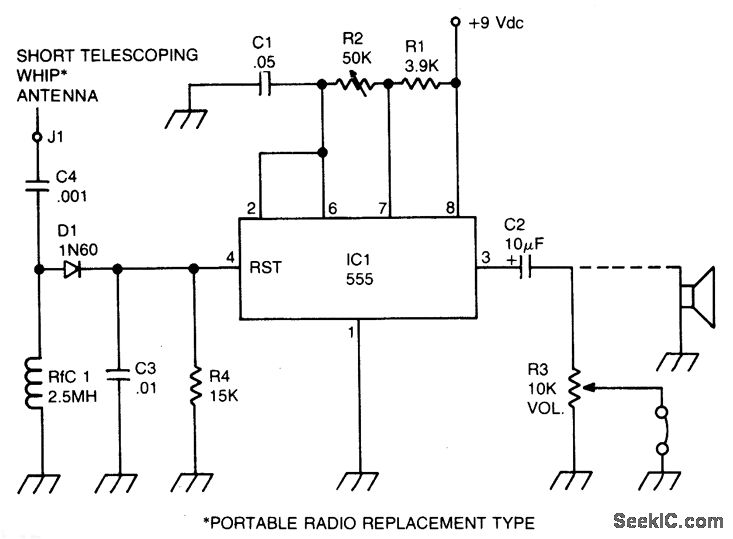
A sidetone oscillator is a specialized audio oscillator that is activated and deactivated in conjunction with the transmitter. This oscillator is driven by RF signals and is powered by batteries. It employs a 555 integrated circuit (IC) timer configured as an astable multivibrator. Keying is achieved by applying a positive DC voltage, generated from the RF signal, to the reset terminal of the 555 timer.
The sidetone oscillator plays a crucial role in communication systems, particularly in radio transmission. It provides an audio feedback signal that allows the operator to monitor the transmitted signal. The 555 timer, functioning as an astable multivibrator, produces a continuous square wave output, which can be adjusted in frequency by varying the external resistors and capacitors connected to it.
In this configuration, the RF-driven aspect of the oscillator ensures that it operates in sync with the transmitter's signal. When the transmitter is keyed, the RF signal generates a positive DC potential that resets the 555 timer, effectively turning the oscillator on. This results in an audible tone that corresponds to the transmission, allowing the operator to hear the sidetone while transmitting.
The circuit typically includes a few passive components such as resistors and capacitors, which determine the frequency and duty cycle of the output waveform. Additionally, a speaker or audio output device is connected to the output of the 555 timer to convert the electrical signal into sound. The battery operation makes the sidetone oscillator portable and suitable for various applications in field communication setups.
Overall, the sidetone oscillator enhances the usability of radio transmitters by providing essential audio feedback, contributing to effective communication practices.A sidetone oscillator is a special audio oscillator that is turned on and off with the transmitter. The oscillator is rf-driven and bat-tery operated. It uses a 555 IC timer as an astable multivibrator. Keying is accomplished by applying a positive dc potential, developed from the rf signal, to the reset terminal of the 555. 🔗 External reference
The sidetone oscillator plays a crucial role in communication systems, particularly in radio transmission. It provides an audio feedback signal that allows the operator to monitor the transmitted signal. The 555 timer, functioning as an astable multivibrator, produces a continuous square wave output, which can be adjusted in frequency by varying the external resistors and capacitors connected to it.
In this configuration, the RF-driven aspect of the oscillator ensures that it operates in sync with the transmitter's signal. When the transmitter is keyed, the RF signal generates a positive DC potential that resets the 555 timer, effectively turning the oscillator on. This results in an audible tone that corresponds to the transmission, allowing the operator to hear the sidetone while transmitting.
The circuit typically includes a few passive components such as resistors and capacitors, which determine the frequency and duty cycle of the output waveform. Additionally, a speaker or audio output device is connected to the output of the 555 timer to convert the electrical signal into sound. The battery operation makes the sidetone oscillator portable and suitable for various applications in field communication setups.
Overall, the sidetone oscillator enhances the usability of radio transmitters by providing essential audio feedback, contributing to effective communication practices.A sidetone oscillator is a special audio oscillator that is turned on and off with the transmitter. The oscillator is rf-driven and bat-tery operated. It uses a 555 IC timer as an astable multivibrator. Keying is accomplished by applying a positive dc potential, developed from the rf signal, to the reset terminal of the 555. 🔗 External reference
